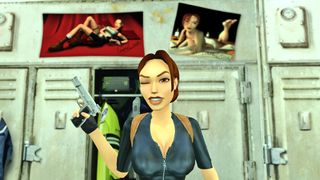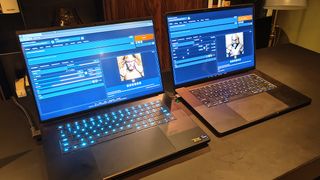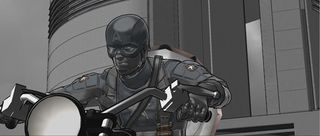
Earlier this year, all-American superhero Captain America returned to the big screen, bringing with him some explosive visual effects. With only a week left to nominate in the 3D World CG Awards we spoke to Monty Granito, supervisor at leading previsualisation company Proof, to find out more.
Why has previs become even more important to filmmakers?
Previs allows filmmakers to achieve levels of complexity that surpass what their budget would allow. If you look at action movies before previs it all has a similar rhythm. Wide shots with the stunt people and second unit, close-ups with the actors, cut it together and see if it plays well. There are millions of variables when putting together any scene. How much of the set do you need to build, how far will these vehicles travel, and more importantly for today, how can we blend these effects into the star's live performance.
Previs allows you to shape the idea in time and space. We play the idea out for real, cover it with cameras, edit it and review it with the filmmakers. We collaboratively shape the sequence shot by shot so at the end they have a window into the sequence. They can see if it is dynamic, if it makes sense, is it affordable and most importantly, does it tell a good story.
What can you offer a director?
We offer the filmmakers an accessible 'virtual' look into the world their ideas are creating. If the idea works in previs, with medium to low-res models and 'efficient' animation, then you can be sure it will work when it's final.
Then the producers can see how much it is going to cost. They use the previs to breakdown the cost of the sequence. They use it as a planning map. What is live action, what is full CG, what is stunt work.
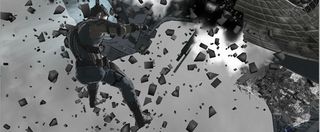
Sometimes the action's complexity and cost is not commiserate with its importance in the story. previs allows them to make those choices early and dial it back before they spend a dime on it. Then if they are happy with the edit, they use it to create a shot plan for when they shoot the sequence.
If they want to shoot exactly what the director liked in the previs we give them the measurements and camera data to do so. If they want to deviate from the previs, at least they have a starting point ready on shoot day. It makes every part of the film more efficient, more collaborative, and more creative from the idea to the day of the shoot.
I've only scratched the surface. Every job uses previs differently, from the sports biopic 42 to blockbusters like Captain America, we help them shape and elevate their creative vision, while getting the most possible bang for their buck.
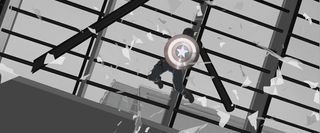
Can you tell when a film uses previs properly, or fails to use it?
Good previs should echo the style of the director, so it's hard to say. And not everyone does previs the same way. When good previs is achieved, the world should feel big, effortless and grounded. When people don't use previs at all I think you can tell in action or fantasy movies, especially because the world is kept in certain rooms.
The restrictions of the budget seem to get in the way of naturalistic intention. The hardest thing to achieve in today's world is the balance between 'reality' and 'oh its just a full CG shot'. For action or emotion to be truly dramatic it has to be believable.
Good previs should echo the style of the director
When I am watching a movie and am wowed by the action, but not conscious of CG, that's a good sign there was previs behind it. When the world is seemingly blowing up all around you but you still know where your main characters are and the action is readable. When I'm watching Jackie Robinson race around Ebbets field and it seems like the camera is free to be there with Jackie and the Dodgers, that's good previs.
How did you handle Falcon's sequence?
Falcon's sequence began as an animation test. We had an image of Falcon doing a back flip off of the helicarrier and Dan, previs artists Eric Benedict, George Antzoulides, Michael Solorzano and I brainstormed his chase scene.
Falcon is trying to get into the helicarrier, we should have a quinjet chase him, the quinjet would be shooting at him. Can we blow up a quinjet and force him to the deck? Why don't we have the quinjet appear out of the smoke like a shark forcing Falcon to shoot, then back flip and open his wings. Yes, please!
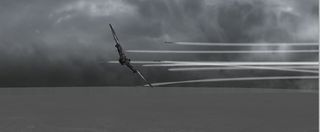

Because we were embedded with production, questions like these could be answered immediately, freeing us up creatively. Collaboration = creativity.
From an animation test, our collective input became the sequence that showed up in the final film. Dan had this idea for an 'Anime' type missile attack. Shahar Eldar designed a missile rig and within a day we had a working missile set up. That led organically to Falcon leading them to the helicarrier dome and blowing his way in.
So teamwork brought Faclon to life?
The previs team, the VFX supervisors, the directors, and producers shaped the sequence. Because we were working collaboratively we stayed grounded.
Producer Nate Moore said, Falcon is not Iron Man. He is just a human being with a set of wings and an engine. Every move should try and adhere to the physics of the real world as much as possible. His agility and quickness is his only weapon.
Our biggest challenge was pushing fantastic action while staying grounded
We would see the directors multiple times a week and while they encouraged us to get fantastical, they always kept us grounded. They gave us strict parameters as to what we could and couldn't do with the characters.
Marvel will not mortgage their characters identities for a big splash. Our biggest challenge was pushing fantastic action while staying grounded. It was achieved through intense collaboration
What was you favorite moment or success from Captain America?
The finale. For more reasons than I can list. We were allowed to rough out the finale very early on. The writers and board artist were working on most of the human to human beats while we were given the helicarrier and Falcon centric beats to pursue.
We had a huge challenge. We had to make the Helicarrier sequence huge and thrilling while not murdering the citizens of Washington, DC.
The directors would not allow Captain America to destroy the Helicarriers if civilians would be harmed. We did know that one of the ships had to hit the Triskelion Building and that Falcon had to jump out. The rest was thousands of variables.
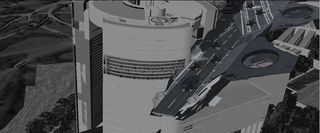
So you got to brainstorm lots of ideas?
Dan wanted the ships to fire on each other like pirate vessels. We did a lot of firing shots, but we wanted escalation at every turn. If we couldn't have the peril of innocents, we would settle for a little surprise.
As we had them firing on each other one organically started to fall towards the other. It was our 'grounded physics' again. If the left engine is blown away, it will carry the ship in that direction and they'll collide, which escalated to the Helicarrier falling into the bay from which it rose. Which escalated to the bay collapsing and the Potomac flooding the bay.
How did previz help the dramatic ending?
We were also able to add to the emotional ending when Bucky is pounding Steve and the helicarrier is crashing. In previs you do a lot of big action, it's rare you get to help shape the emotional side as well.
From Cap tossing the shield into the Potomac, a piece of structure moving behind Bucky to blow away the bottom of the Dome, to a gorgeous slow motion fall into the river, my team and I were able to help shape the mood and storytelling of the film's end.
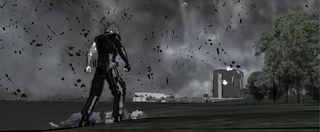
How did the director's help plot the finale?
The Russos, Nate Moore, Dan Deleeuw and VFX producer Jen Underdahl allowed us, encouraged us, to escalate at every turn, building on what we had done before.
They made us scrap whole versions of the sequence to make it better and better. That's what we always go for. We keep our previs light and fast. We want versions. The 15 version is usually better than the sixth so we don't worry about bells and whistles.
We focus on storytelling, choreography, geography and impact
We focus on storytelling, choreography, geography and impact. We want to help make the best film possible... not the fanciest previs possible.
That's when I was the most proud, when Cap was falling into the Potomac and I could remember the whole movie and how each member of my team was able to add to the story and grow as artists and filmmakers. Not as technicians, not as part of a pipeline, but as collaborative filmmakers.
Is previz just for big budget action movies?
Previs is for any film-maker who wants to test an idea before deciding to shoot it. That definitely applies to visual effects shots, but it could also mean shooting a tricky location, planning a complex camera move, or evaluating how to shoot within a built set.
In previs, we'll build the environment to scale, animate the scene and drop in cameras to cover the action. The cameras are rendered out and reviewed to make sure the initial idea is coming through effectively.
If it is, then the filmmakers can move forwards with confidence. If not, then we go through a revision process to figure out how to make the idea work.
How does budget affect previz work?
The principle is the same whether it's a big budget tentpole, or a small indie film. The only difference is scale. For big VFX-driven projects, there might be a previs team of a dozen or more artists working for months. For a smaller project that might be a single artist working for a few days. The process is the same, just applied at a different scale.
What software do you use and why?
Proof's primary 3D package is Maya. We've written a suite of tools within Maya to help us work more quickly and accurately, but the foundation is Maya. We also use Adobe Photoshop, Premiere and Illustrator. Michael Solorzano used Blender to simulate the destruction of the Triskellion.
Maya is a great package for modeling and animation. In addition, it's the de facto standard in the VFX industry. Because we're all working in Maya we can easily exchange assets which makes the whole previs - VFX process more efficient.
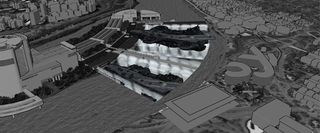
How is new tech helping previz work?
The biggest change for previs has come in advances in computer processing and, specifically, in graphics processing. Bigger, faster machines mean we can get more done in less time.
Advances that are coming soon are the implementation of game engines for previs, so we can see our work in real-time, rather than as a two step animation - rendering workflow.
There's also some fascinating developments in augmented reality that might prove very useful to previs. There are lots of technological innovations on the horizon and it will be exciting to see how they transform the work we do.
What are you currently working on?
I just finished supervising the previs on a feature film centered around an earthquake. Currently I'm helping out on another Proof project, Night at the Mueseum 3, while awaiting my next big challenge.
Read more about Proof's previz work on Captain America: The Winter Soldier in issue 183 of 3D World, on sale now. Nominate your favourite film VFX scene in the 3D World CG Awards here.


